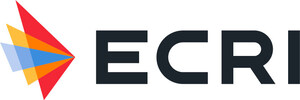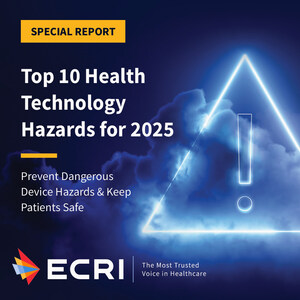Nonprofit patient safety organization releases hazard report, recommendations
PLYMOUTH MEETING, Pa., April 12, 2024 /PRNewswire/ -- Ransomware groups are increasingly targeting vulnerable remote access systems in healthcare, with several high-profile incidents in recent months. Ransomware attacks can cripple a hospital's ability to serve patients by cutting off access to or manipulating essential technologies and patient data. Hackers can exploit remote systems to divert emergency vehicles, cancel appointments, and in worse-case scenarios, shut down entire facilities.
It's common for hospitals to grant remote access to their networks, including for hybrid or remote employees; for physicians accessing patient records; and for radiologists reading studies. Vendors are also given access to remote hospital systems to run financial operations such as bill payments; or to support medical devices, IT systems, or physical plant/HVAC systems. Attackers can exploit these entry points—gaining access to and moving throughout the network—if remote access systems are not protected.
"The consequences of these attacks can be devastating: vital medical records held hostage, treatment plans in disarray, and potentially deadly delays in care," said Marcus Schabacker, MD, PhD, president and CEO of ECRI. "Each unchecked vulnerability is a threat to patient safety. To grow complacent about cybersecurity in healthcare is to play fast and loose with patients' lives."
"Although we're seeing an uptick in ransomware that targets remote access, this threat is not new," added Schabacker. "ECRI has called out cybersecurity issues in our annual top ten hazards list every year since 2018 – with hackers exploiting remote access topping the list in 2019. It's alarming that the issue has only worsened in the years since."
ECRI's recent report includes recommendations for healthcare leaders to address ransomware attacks on remote access systems:
- Ensure that Internet-facing systems (e.g., remote access systems, VPNs) are configured securely and that security updates are applied.
- Routinely scan perimeter networks for vulnerabilities. Cybersecurity & Infrastructure Security Agency (CISA) offers vulnerabilities scanning to health delivery organizations (HDOs) at no cost. https://www.cisa.gov/cyber-hygiene-services.
- Routinely audit against the CISA Known Exploited Vulnerabilities (KEV) catalog. https://www.cisa.gov/known-exploited-vulnerabilities-catalog.
- Prioritize remediation of any systems affected by vulnerabilities listed in the KEV catalog.
- Consider blocking network traffic to internet-facing systems from potentially adversarial countries with which your organization does not conduct business.
- Routinely audit logs and traffic from remote access systems.
- Do not ignore other attack vectors such as phishing and password compromise.
- Develop incident response plans that include ransomware contingencies and recovery.
- Include policies on patient diversion.
- Include downtime and offline procedures for operating without an electronic medical record (EMR) and all other networked medical systems and devices.
- Identify who to contact at law enforcement agencies.
- Identify your primary vendor contacts for clinical and IT systems.
- Maintain backup and recovery methods for all IT systems, and periodically test restoration from backups.
- Consult legal counsel in the event of a data breach or ransom demand. Consider that payment of a ransom incentivizes future attacks, and that payment is not a guarantee that systems will be restored, either in part or in full.
The full report, released to ECRI members, includes high-profile ransomware incidents that recently impacted the healthcare industry. ECRI is one of the nation's largest patient safety organizations, and the only organization worldwide to conduct independent medical device evaluations.
SOURCE ECRI

WANT YOUR COMPANY'S NEWS FEATURED ON PRNEWSWIRE.COM?
Newsrooms &
Influencers
Digital Media
Outlets
Journalists
Opted In






Share this article